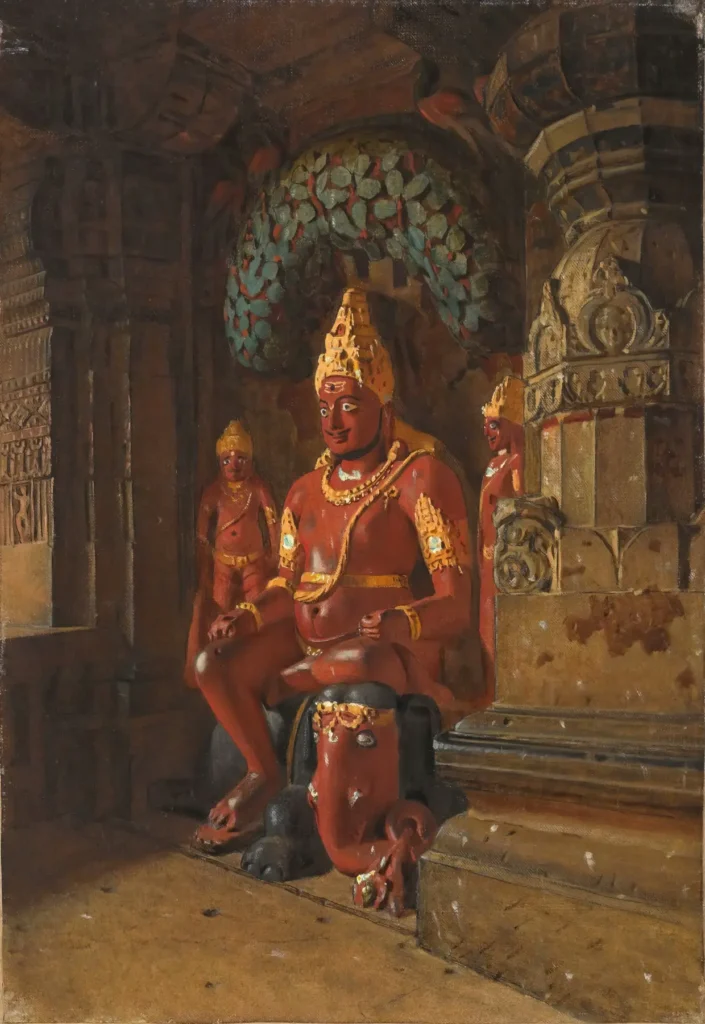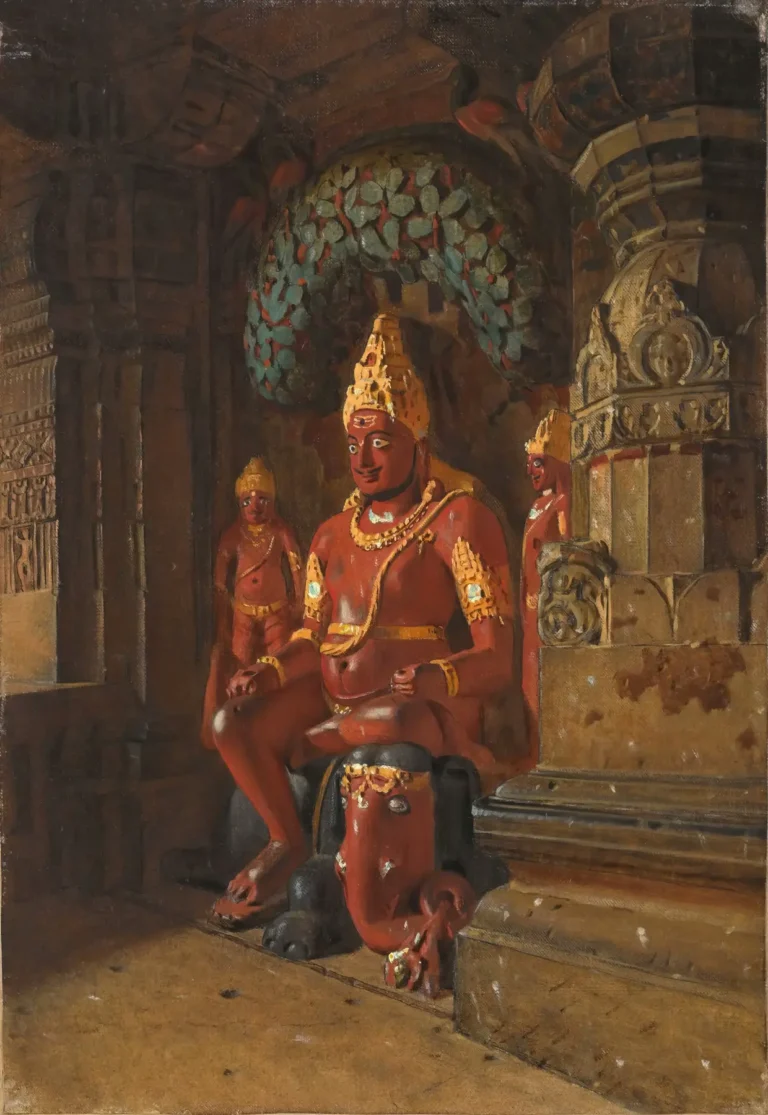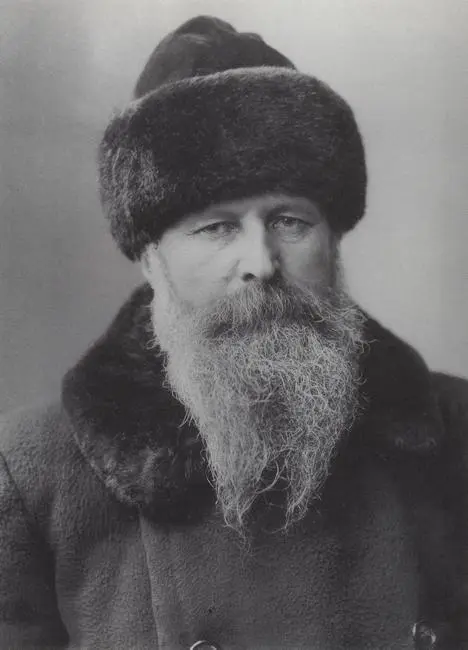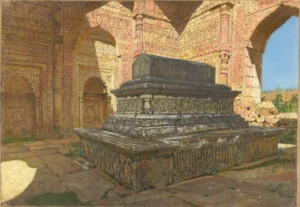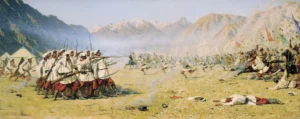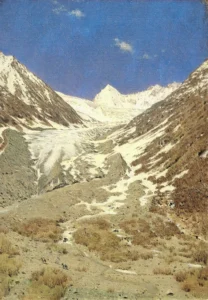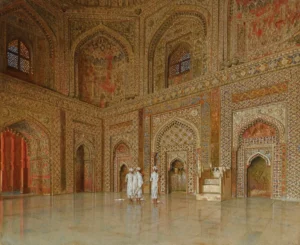Statue of Vishnu at the Temple of Indra at Ellora (between 1874 and 1876)
Vasily Vereshchagin's 'Statue of Vishnu in the temple of Indra in Ellora' is a captivating artwork created between 1874 and 1876. Measuring 41 cm by 29 cm, this painting exemplifies Vereshchagin's Realism style, focusing on the statue of Vishnu nestled within the temple of Indra in the renowned Ellora Caves of India. The artwork serves not only as a visual delight but also as a rich historical narrative, illustrating the artist's immersion in Indian culture during his travels.
1874 - 1876
About the Artwork
This painting stemmed from Vasily Vereshchagin's travels in India, where he sought to capture the profound essence of the region's spirituality and architecture. The Ellora Caves, a UNESCO World Heritage site, feature a remarkable collection of rock-cut temples and monolithic structures, showcasing the artistic prowess of ancient Indian craftsmen. By depicting the revered statue of Vishnu, Vereshchagin not only paid homage to the region's spiritual significance but also bridged cultural perceptions between East and West. His Realist approach captured both the aesthetic beauty and the rich narrative within the sacred sites of India during a transformative time in his artistic journey.
Did You Know
Vereshchagin was known for his adventurous spirit, and his travels took him to various contexts, including war zones and cultural landmarks. His intense experiences greatly influenced his artistic direction and subjects.
In Hinduism, Vishnu is one of the principal deities, revered as the ‘Preserver’ within the Holy Trinity. The statue captures his importance in protecting dharma (cosmic order) and is a significant representation of Indian spirituality.
The Ellora Caves, where the statue resides, are renowned for their monumental architecture, showcasing intricate carvings and reliefs that date back to the 6th to 8th centuries. This site reflects the fusion of Buddhist, Hindu, and Jain traditions, making it a treasure of cultural heritage.




